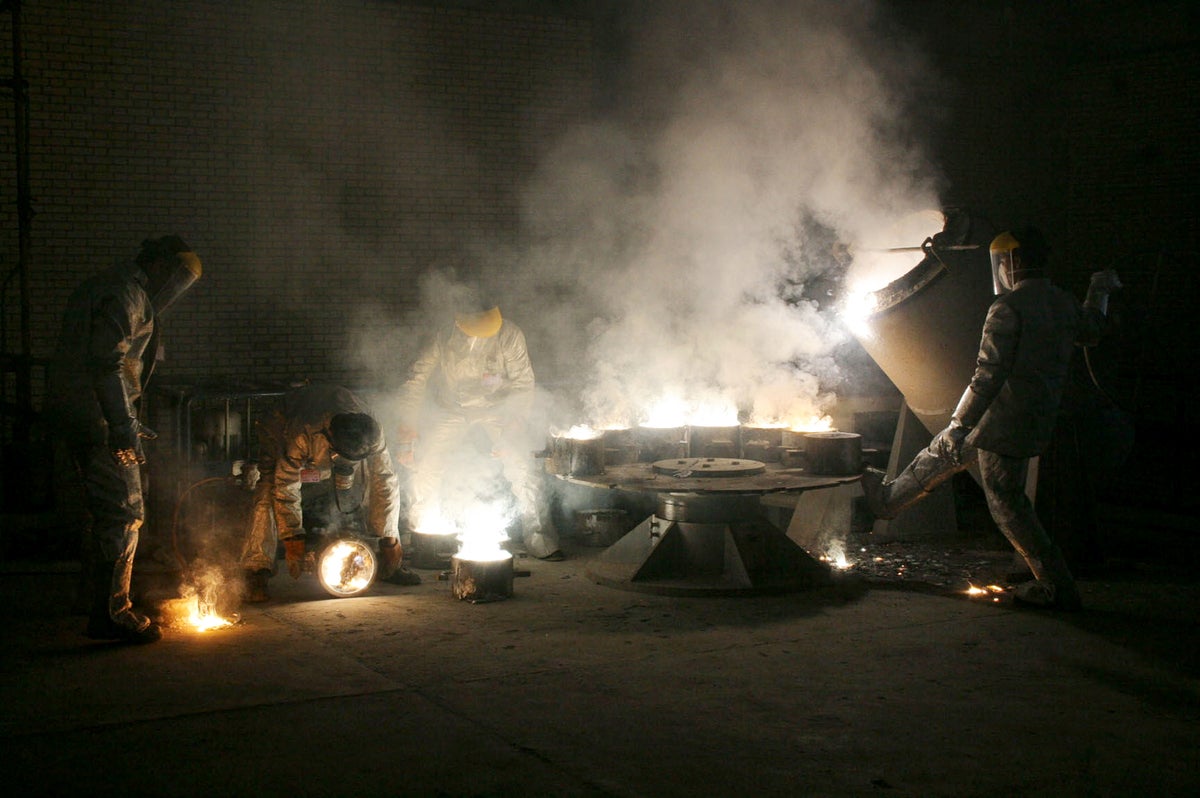Could Iran Have Been Close to Making a Nuclear Weapon? Uranium Enrichment Explained
When Israeli aircraft recently struck a uranium-enrichment complex in the nation, Iran could have been days away from achieving “breakout,” the ability to quickly turn “yellowcake” uranium into bomb-grade fuel, with its new high-speed centrifuges
Men work inside of a uranium conversion facility just outside the city of Isfahan, Iran, on March 30, 2005. The facility in Isfahan made hexaflouride gas, which was then enriched by feeding it into centrifuges at a facility in Natanz, Iran.
Join Our Community of Science Lovers!
But why did the strike occur now? One consideration could involve the way enrichment complexes work. Natural uranium is composed almost entirely of uranium 238, or U-238, an isotope that is relatively “heavy” (meaning it has more neutrons in its nucleus). Only about 0.7 percent is uranium 235 (U-235), a lighter isotope that is capable of sustaining a nuclear chain reaction. That means that in natural uranium, only seven atoms in 1,000 are the lighter, fission-ready U-235; “enrichment” simply means raising the percentage of U-235.
If you’re enjoying this article, consider supporting our award-winning journalism by subscribing. By purchasing a subscription you are helping to ensure the future of impactful stories about the discoveries and ideas shaping our world today.
To enrich uranium so that it contains enough U-235, the “yellowcake” uranium powder that comes out of a mine must go through a lengthy process of conversions to transform it from a solid into the gas uranium hexafluoride. First, a series of chemical processes refine the uranium and then, at high temperatures, each uranium atom is bound to six fluorine atoms. The result, uranium hexafluoride, is unusual: below 56 degrees Celsius (132.8 degrees Fahrenheit) it is a white, waxy solid, but just above that temperature, it sublimates into a dense, invisible gas.
During enrichment, this uranium hexafluoride is loaded into a centrifuge: a metal cylinder that spins at tens of thousands of revolutions per minute—faster than the blades of a jet engine. As the heavier U-238 molecules drift toward the cylinder wall, the lighter U-235 molecules remain closer to the center and are siphoned off. This new, slightly U-235-richer gas is then put into the next centrifuge. The process is repeated 10 to 20 times as ever more enriched gas is sent through a series of centrifuges.
Enrichment is a slow process, but the Iranian government has been working on this for years and already . This falls short of the 90 percent required for nuclear weapons. But whereas Iran’s first-generation IR-1 centrifuges whirl at about 63,000 revolutions per minute and do relatively modest work, its newer IR-6 models, built from high-strength carbon fiber, spin faster and produce enriched uranium far more quickly.
Iran has been installing thousands of these units, especially at Fordow, an underground enrichment facility built beneath 80 to 90 meters of rock. According to a report released on Monday by the Institute for Science and International Security, the new centrifuges could produce enough 90 percent U-235 uranium for a warhead “in as little as two to three days” and enough for nine nuclear weapons in three weeks—or 19 by the end of the third month.
Deni Ellis Béchard is Scientific American’s senior tech reporter. He is author of 10 books and has received a Commonwealth Writers’ Prize, a Midwest Book Award and a Nautilus Book Award for investigative journalism. He holds two master’s degrees in literature, as well as a master’s degree in biology from Harvard University. His most recent novel, We Are Dreams in the Eternal Machine, explores the ways that artificial intelligence could transform humanity. You can follow him on X, Instagram and Bluesky @denibechard.
Source: www.scientificamerican.com
